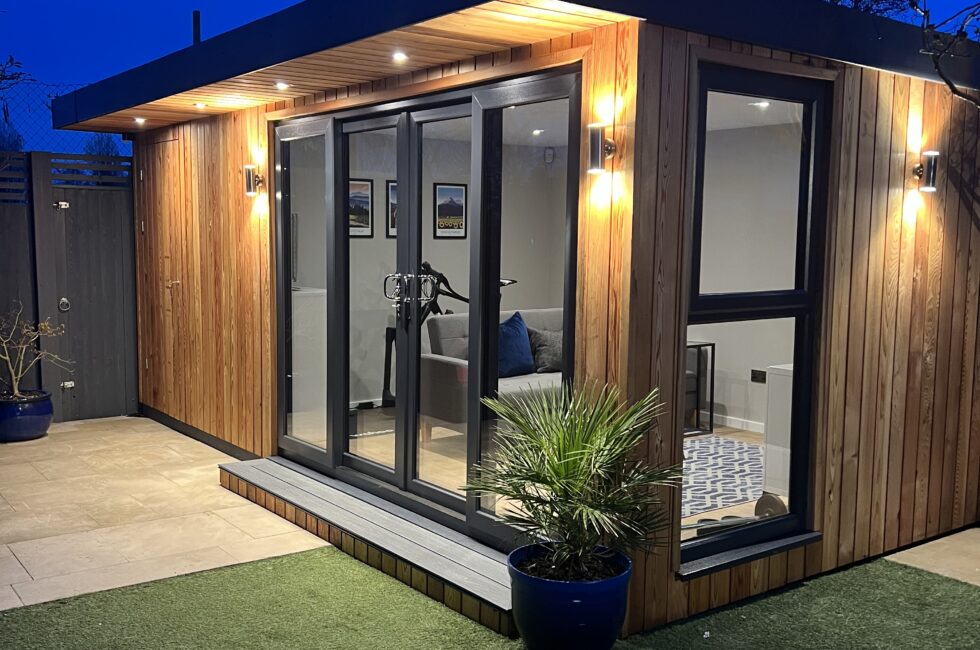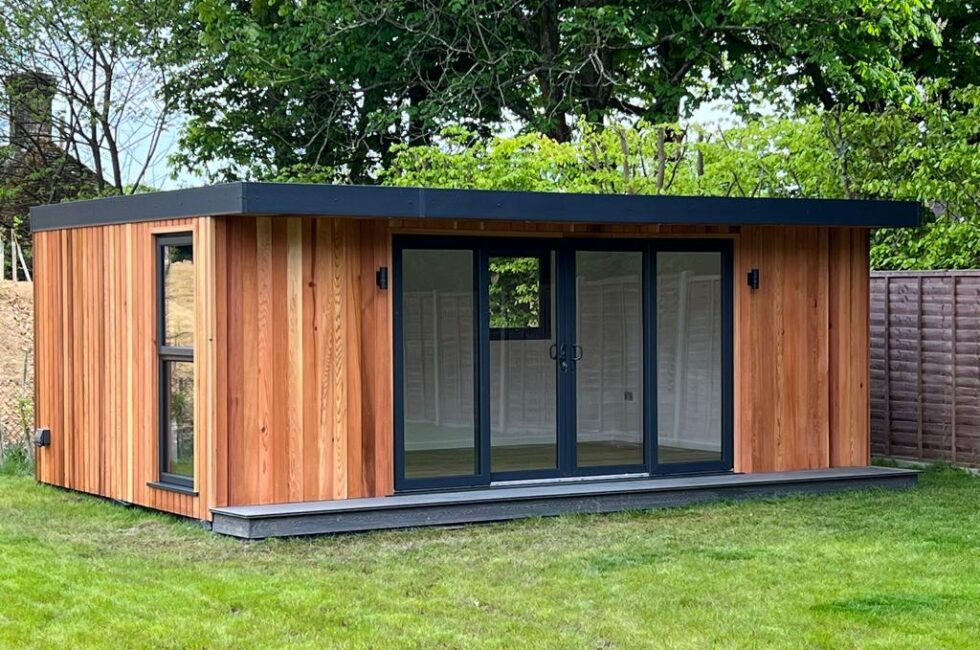- Quality of Materials: The materials used in constructing a garden room significantly determine its durability. High-quality timber, durable metals, and robust insulating materials can contribute to a longer lifespan.
- Construction Techniques: How a garden room is built impacts its structural integrity and longevity. Professional installation using sound construction techniques enhances durability and ensures longevity.
- Environmental Conditions: Exposure to various environmental factors such as sunlight, moisture, wind, and temperature fluctuations can affect the lifespan of a garden room. Proper maintenance and protective measures can mitigate these effects.
- Maintenance: Regular maintenance, including cleaning, sealing, and treating wood surfaces, is essential for preserving the structural integrity and appearance of a garden room over time.
- Usage: The intended use of a garden room can also influence its lifespan. Structures used frequently or subjected to heavy equipment may experience more wear and tear compared to those used sparingly.
 Factors Affecting Longevity
Quality of Materials
Investing in high-quality materials, such as pressure-treated timber, corrosion-resistant metals, and durable roofing materials, can significantly extend the lifespan of a garden room. Opting for materials that are designed to withstand outdoor conditions and resist decay and deterioration is key to ensuring longevity.
Construction Techniques
The manner in which a garden room is constructed is crucial for its longevity. Professional installation by experienced craftsmen using sturdy foundations, robust framing, and weatherproofing measures can enhance the structural integrity of the structure and protect it against damage.
Environmental Conditions
Garden rooms are exposed to various environmental elements, including sunlight, rain, snow, and humidity. Over time, exposure to these elements can cause wear and tear, deterioration, and structural damage. Implementing measures such as proper drainage, waterproofing, and regular inspections can help mitigate the impact of environmental factors and prolong the lifespan of a garden room.
Maintenance
Regular maintenance is essential for preserving the condition of a garden room and extending its lifespan. This includes inspecting for signs of damage, cleaning surfaces, resealing wood, repairing any structural issues, and addressing any maintenance needs promptly. By staying proactive with maintenance, homeowners can prevent minor issues from escalating into major problems and ensure the long-term durability of their garden room.
Factors Affecting Longevity
Quality of Materials
Investing in high-quality materials, such as pressure-treated timber, corrosion-resistant metals, and durable roofing materials, can significantly extend the lifespan of a garden room. Opting for materials that are designed to withstand outdoor conditions and resist decay and deterioration is key to ensuring longevity.
Construction Techniques
The manner in which a garden room is constructed is crucial for its longevity. Professional installation by experienced craftsmen using sturdy foundations, robust framing, and weatherproofing measures can enhance the structural integrity of the structure and protect it against damage.
Environmental Conditions
Garden rooms are exposed to various environmental elements, including sunlight, rain, snow, and humidity. Over time, exposure to these elements can cause wear and tear, deterioration, and structural damage. Implementing measures such as proper drainage, waterproofing, and regular inspections can help mitigate the impact of environmental factors and prolong the lifespan of a garden room.
Maintenance
Regular maintenance is essential for preserving the condition of a garden room and extending its lifespan. This includes inspecting for signs of damage, cleaning surfaces, resealing wood, repairing any structural issues, and addressing any maintenance needs promptly. By staying proactive with maintenance, homeowners can prevent minor issues from escalating into major problems and ensure the long-term durability of their garden room.

Do garden rooms require planning permission? A simple guide
What materials are right for your garden room?
Insights from My Retreat In essence, a well-maintained garden room is designed to last for 25-30+ years, and with proper care, it can indeed last a lifetime. The roof, typically crafted from high-grade EPDM rubber such as Bridgestone that My Retreat uses, has a minimum life expectancy of 15-25 years. Opting for composite cladding guarantees longevity, although timber cladding may necessitate replacement after 25-30+ years. The doors and windows, which are the same found in your home, boast a minimum lifespan of 10 years. Moreover, while a timber base can endure for 25+ years, a steel frame floor, like those used by My Retreat, offers virtually indefinite longevity. Our commitment to using top-tier materials and employing a professional installation team ensures minimal callbacks, and we proudly stand behind our craftsmanship with a comprehensive 10-year warranty. Conclusion While the lifespan of a garden room can vary depending on several factors, including materials, construction techniques, environmental conditions, usage, and maintenance, with proper care and attention, these structures can last for many years. By investing in quality materials, professional installation, and regular maintenance, you can enjoy the benefits of their garden room for decades to come. Whether used as a home office, entertainment space, or retreat, a well-built and well-maintained garden room can add value to your property and enhance your lifestyle and home for years to come. What would you like to do next?- Design your garden room for free and get an instant price that will be installed by us.
- Find out how much a garden room costs.
- Find out how much a pod kit costs.
- Go to the Planning Portal to read more on Building Regulations
- Go to the Planning Portal to find out more about Planning Permission and find your Local Authority

